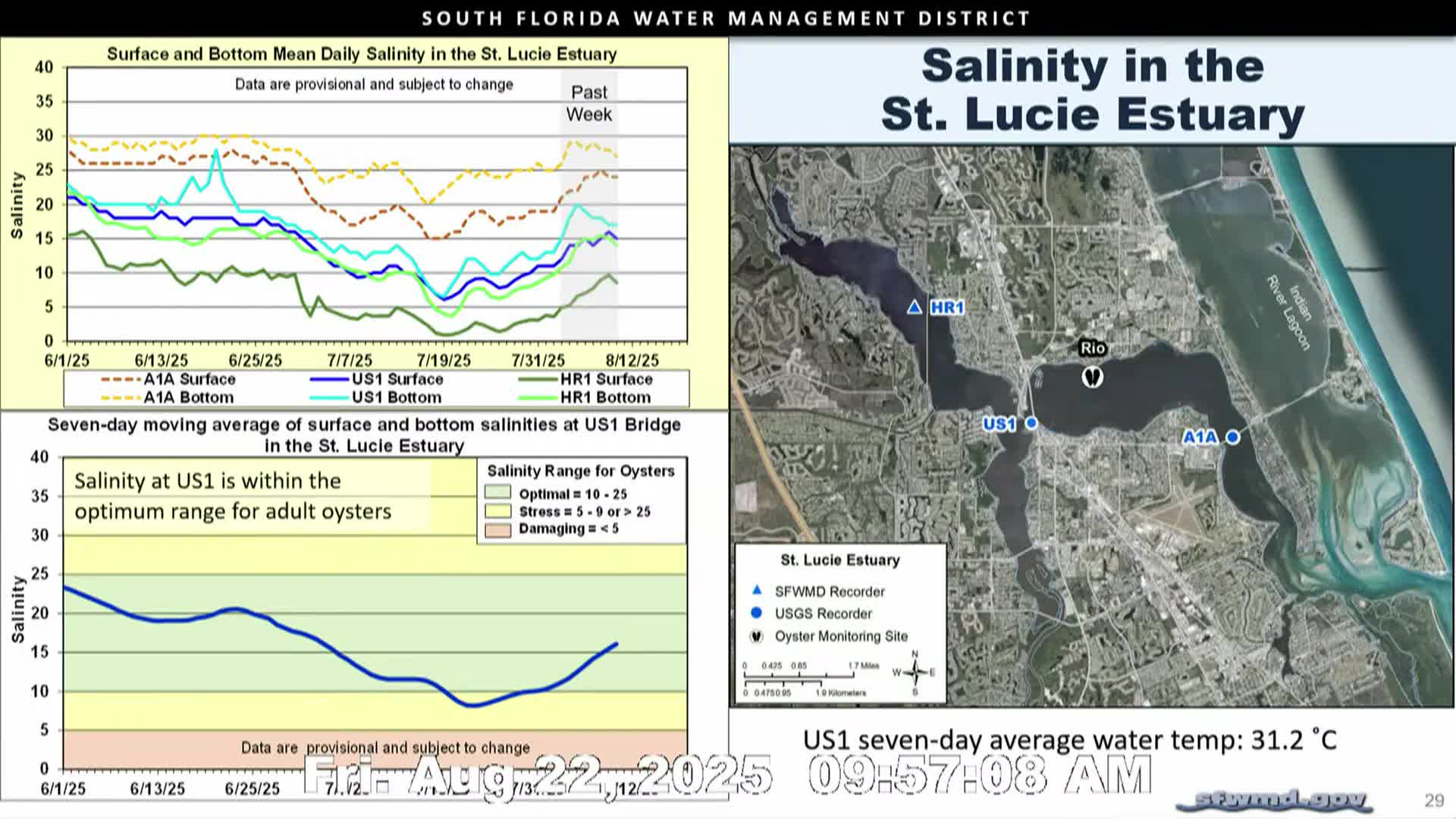FWC Reports Increased Oyster Spat and Seagrass Coverage in St. Lucie Estuary
August 23, 2025 | Sebastian , Indian River County, Florida
This article was created by AI summarizing key points discussed. AI makes mistakes, so for full details and context, please refer to the video of the full meeting. Please report any errors so we can fix them. Report an error »

The Indian River Lagoon Council Board of Directors meeting held on August 22, 2025, revealed promising updates regarding the health of local marine ecosystems, particularly concerning oysters and seagrass in the region.
A key highlight from the meeting was the positive trend in salinity levels at the US 1 Bridge monitoring station, which is crucial for the local oyster population. After a brief dip into a lower salinity range in mid-July due to rainfall, levels have stabilized within the optimal range, supporting the health of oyster larvae as they approach the end of their spawning season. This stability is vital, as low salinity can be detrimental to newly settled spat.
The meeting also addressed recent oyster recruitment data, indicating a late start to the spawning season this year, with initial recordings in May showing low averages. However, a significant spawning event in June yielded nearly 18 spat per shell, marking the highest recruitment in two years. Experts anticipate another peak in spawning activity in October and November, which could further bolster the local oyster population.
In addition to oysters, the council discussed recent seagrass monitoring efforts, which showed mixed results. While there was an increase in seagrass cover in the northern St. Lucie Estuary, other areas, such as Hobe Sound and Jupiter Sound, experienced declines. The monitoring highlighted the dominance of specific seagrass species in various regions, with Shoalgrass being prevalent in most sites.
These findings underscore the ongoing efforts to monitor and improve the health of the Indian River Lagoon ecosystem, which is crucial for both marine life and the local community. As the council continues to track these developments, stakeholders remain hopeful for sustained improvements in water quality and habitat conditions in the coming months.
A key highlight from the meeting was the positive trend in salinity levels at the US 1 Bridge monitoring station, which is crucial for the local oyster population. After a brief dip into a lower salinity range in mid-July due to rainfall, levels have stabilized within the optimal range, supporting the health of oyster larvae as they approach the end of their spawning season. This stability is vital, as low salinity can be detrimental to newly settled spat.
The meeting also addressed recent oyster recruitment data, indicating a late start to the spawning season this year, with initial recordings in May showing low averages. However, a significant spawning event in June yielded nearly 18 spat per shell, marking the highest recruitment in two years. Experts anticipate another peak in spawning activity in October and November, which could further bolster the local oyster population.
In addition to oysters, the council discussed recent seagrass monitoring efforts, which showed mixed results. While there was an increase in seagrass cover in the northern St. Lucie Estuary, other areas, such as Hobe Sound and Jupiter Sound, experienced declines. The monitoring highlighted the dominance of specific seagrass species in various regions, with Shoalgrass being prevalent in most sites.
These findings underscore the ongoing efforts to monitor and improve the health of the Indian River Lagoon ecosystem, which is crucial for both marine life and the local community. As the council continues to track these developments, stakeholders remain hopeful for sustained improvements in water quality and habitat conditions in the coming months.
View full meeting
This article is based on a recent meeting—watch the full video and explore the complete transcript for deeper insights into the discussion.
View full meeting